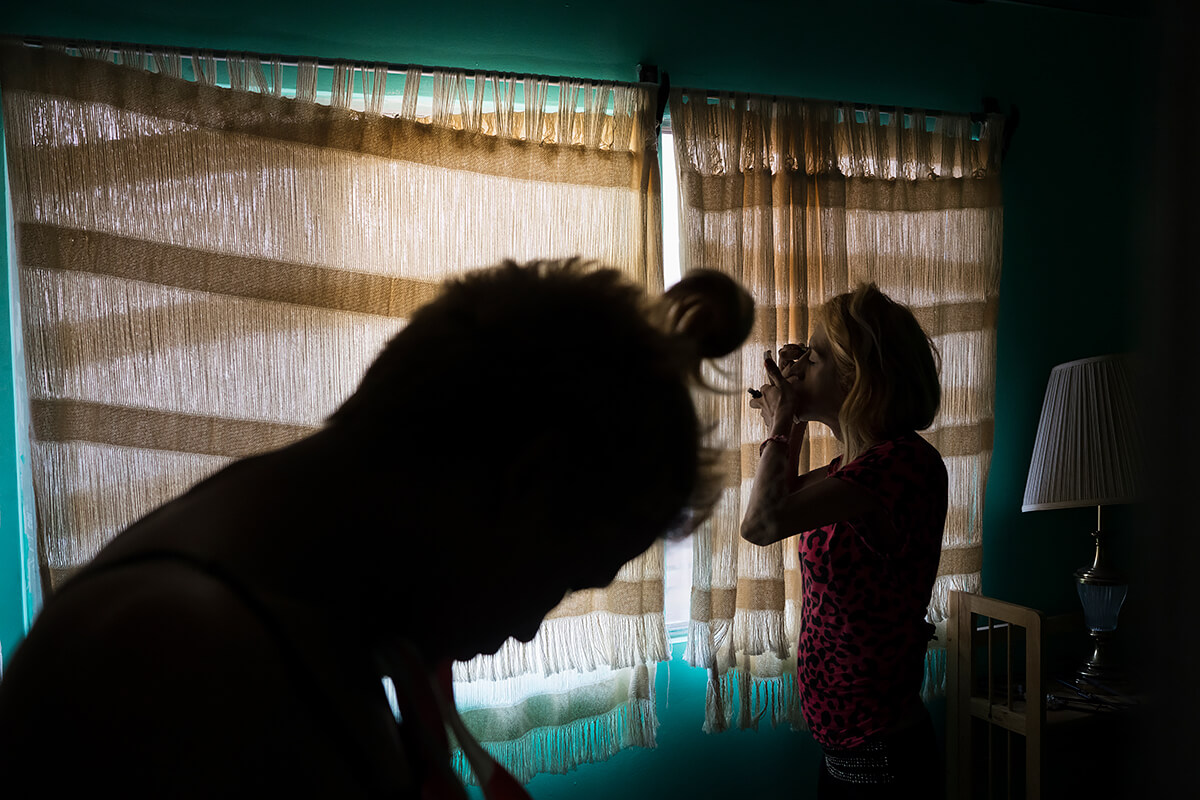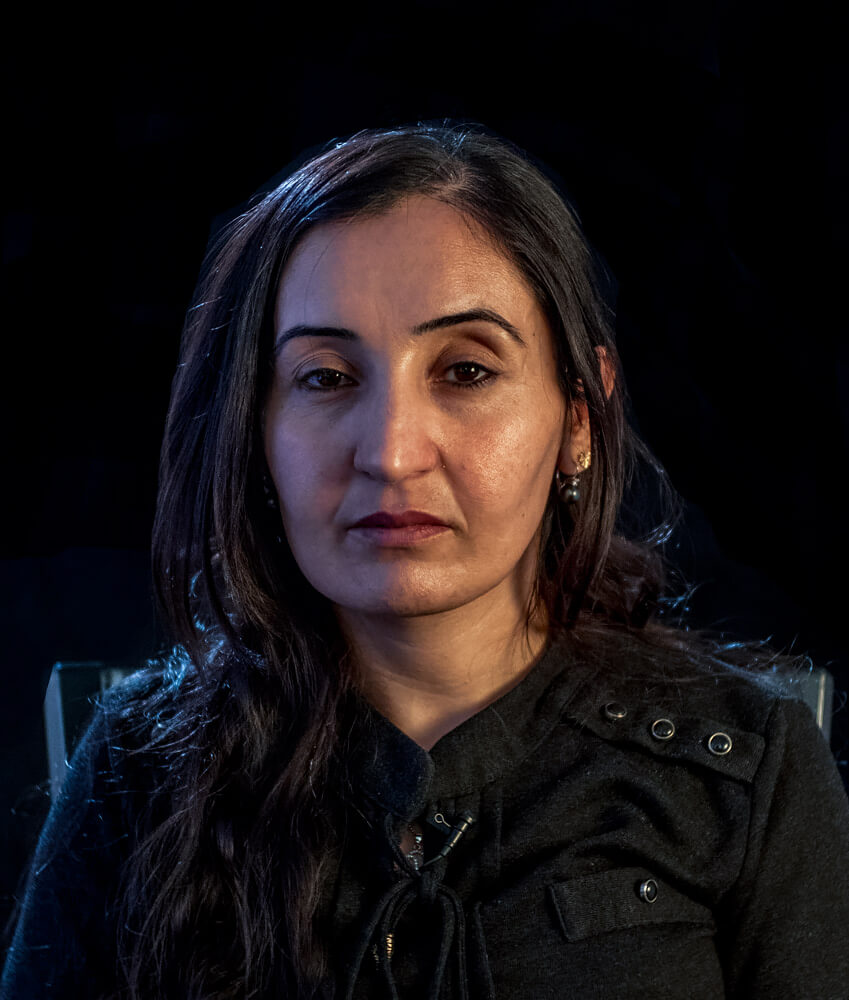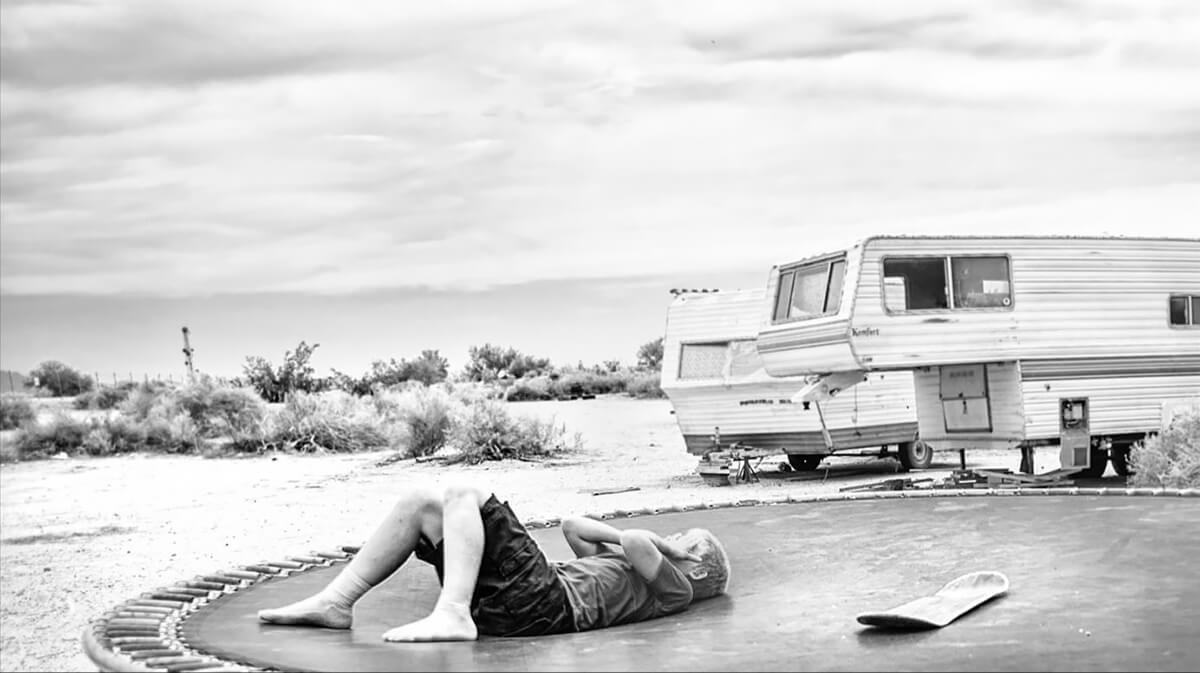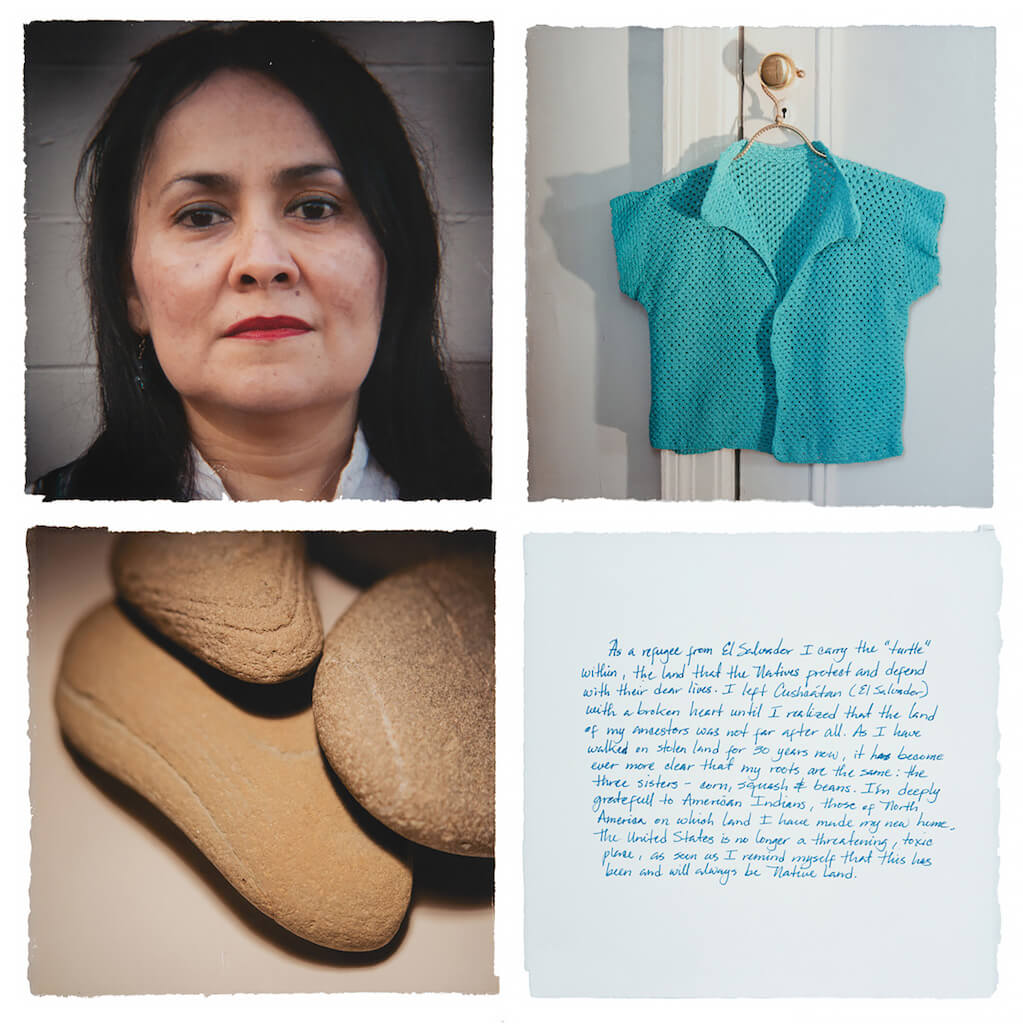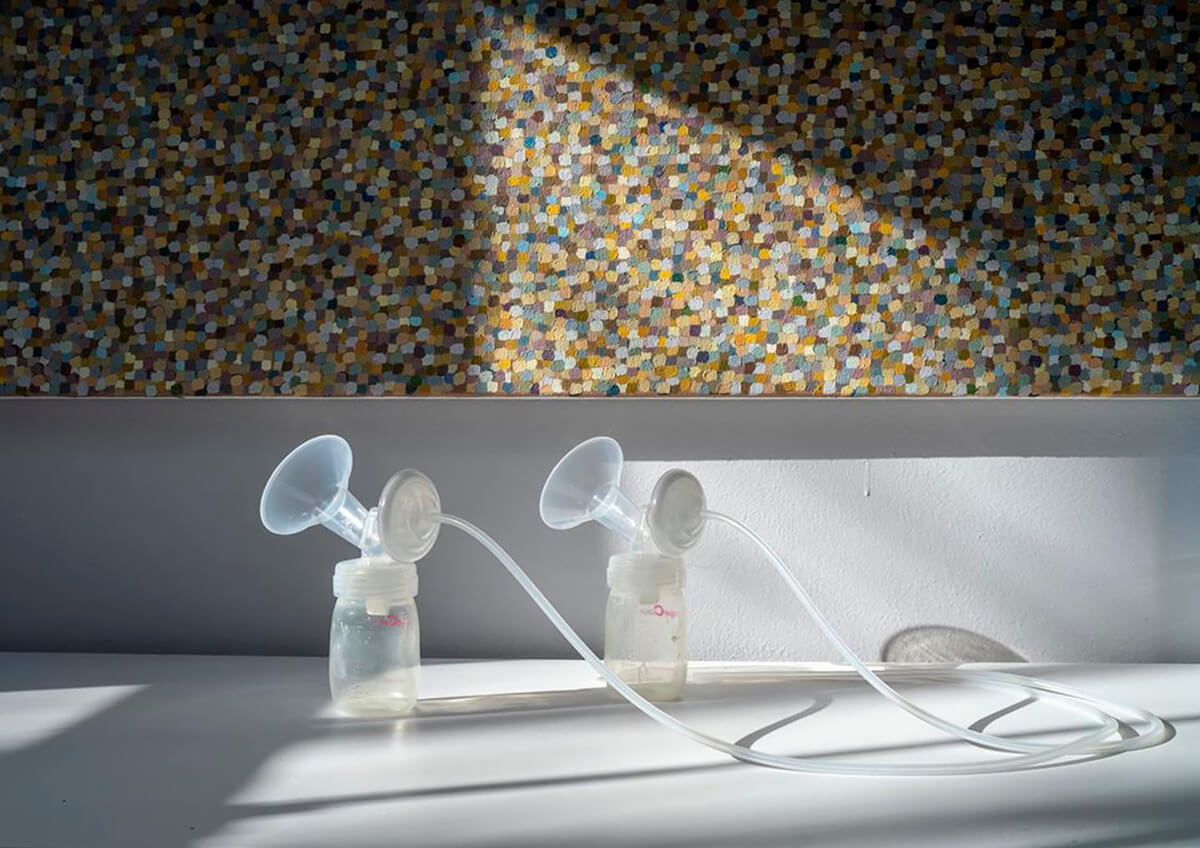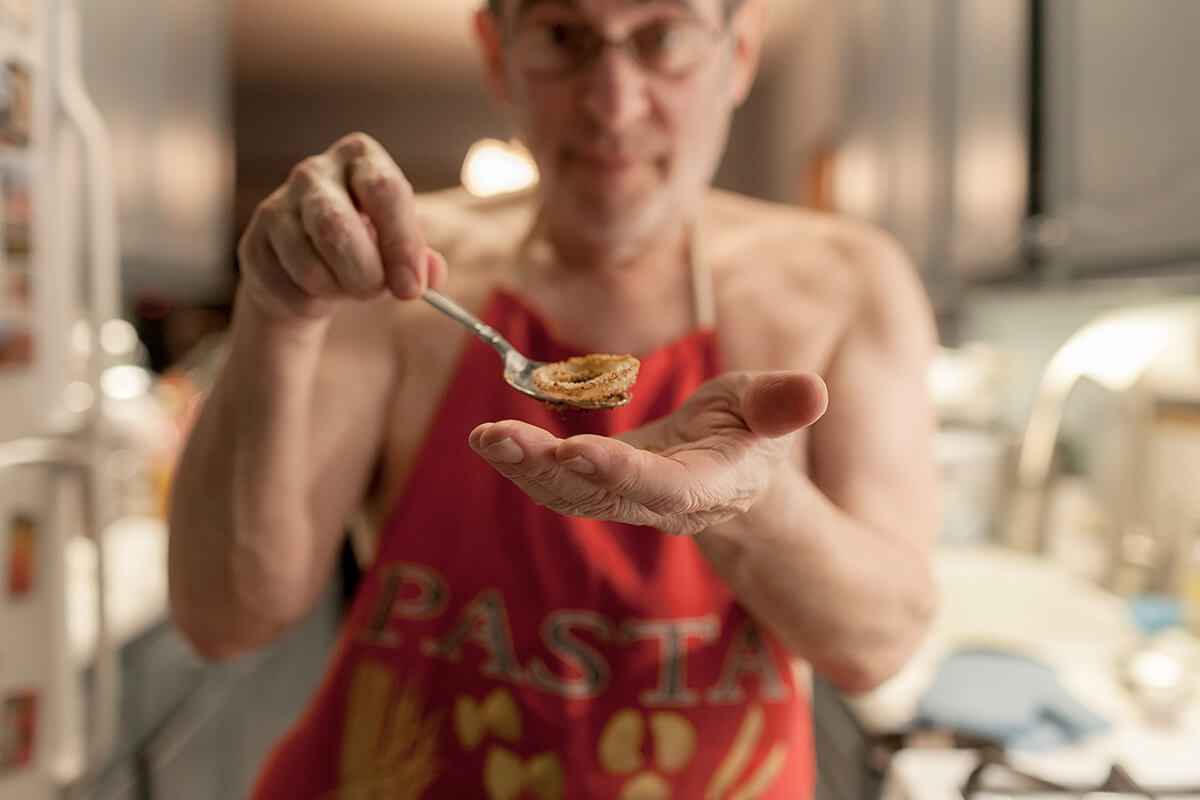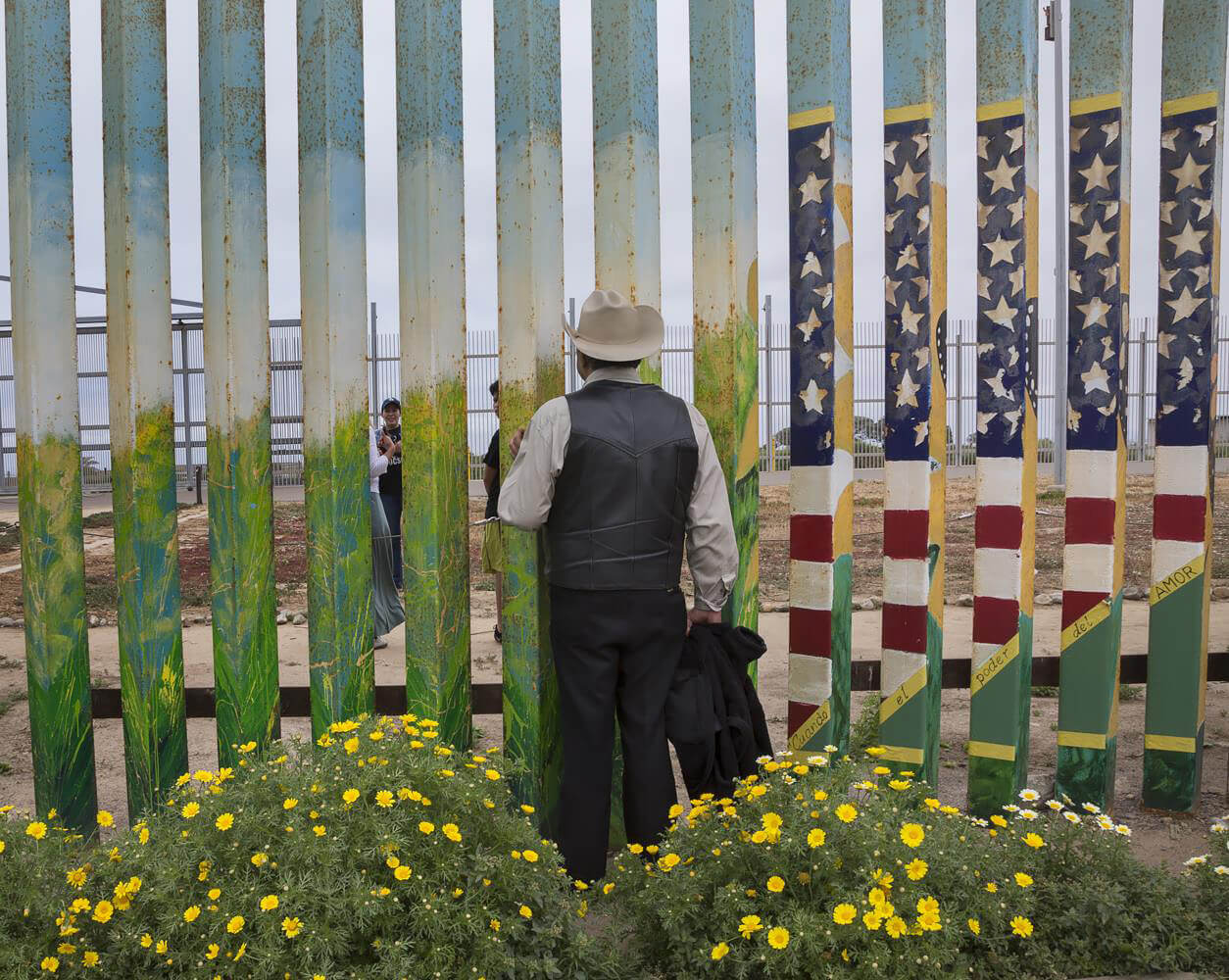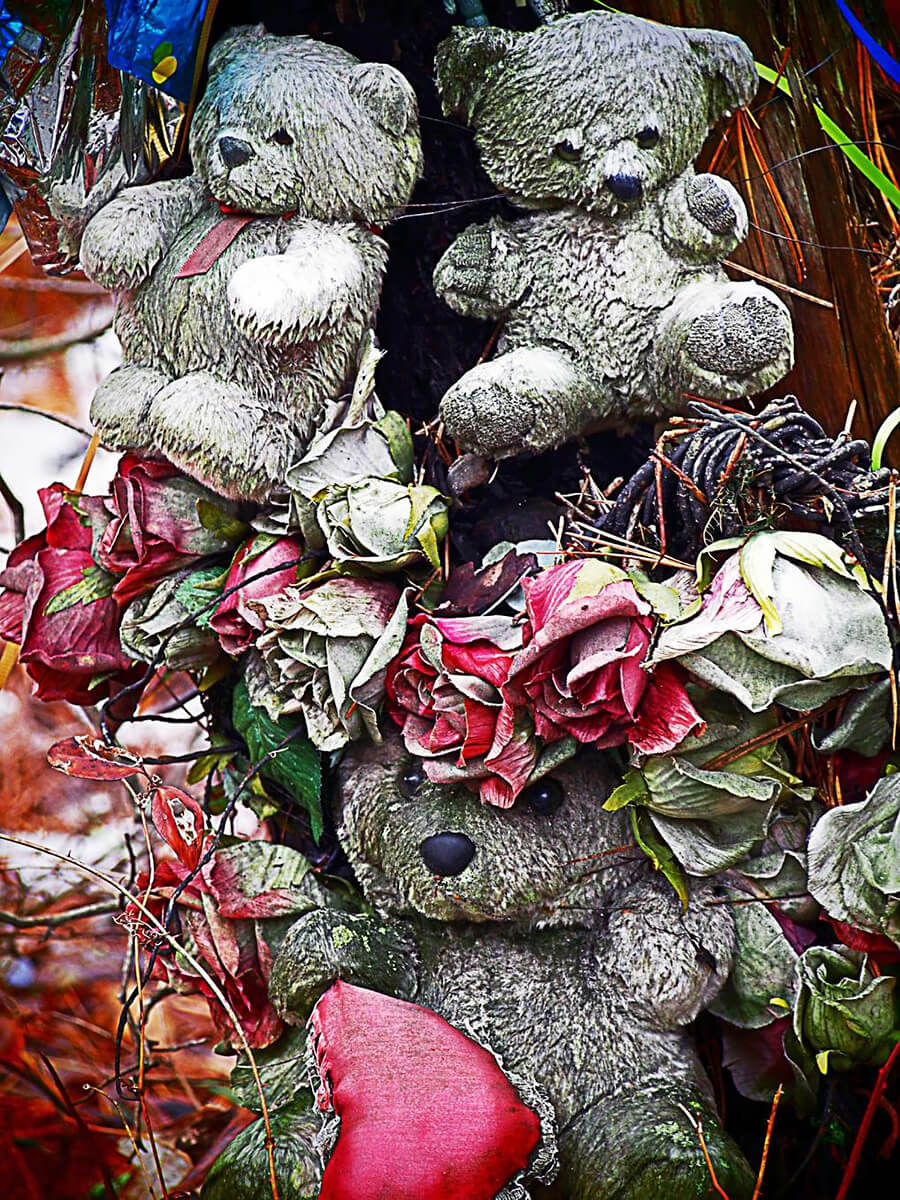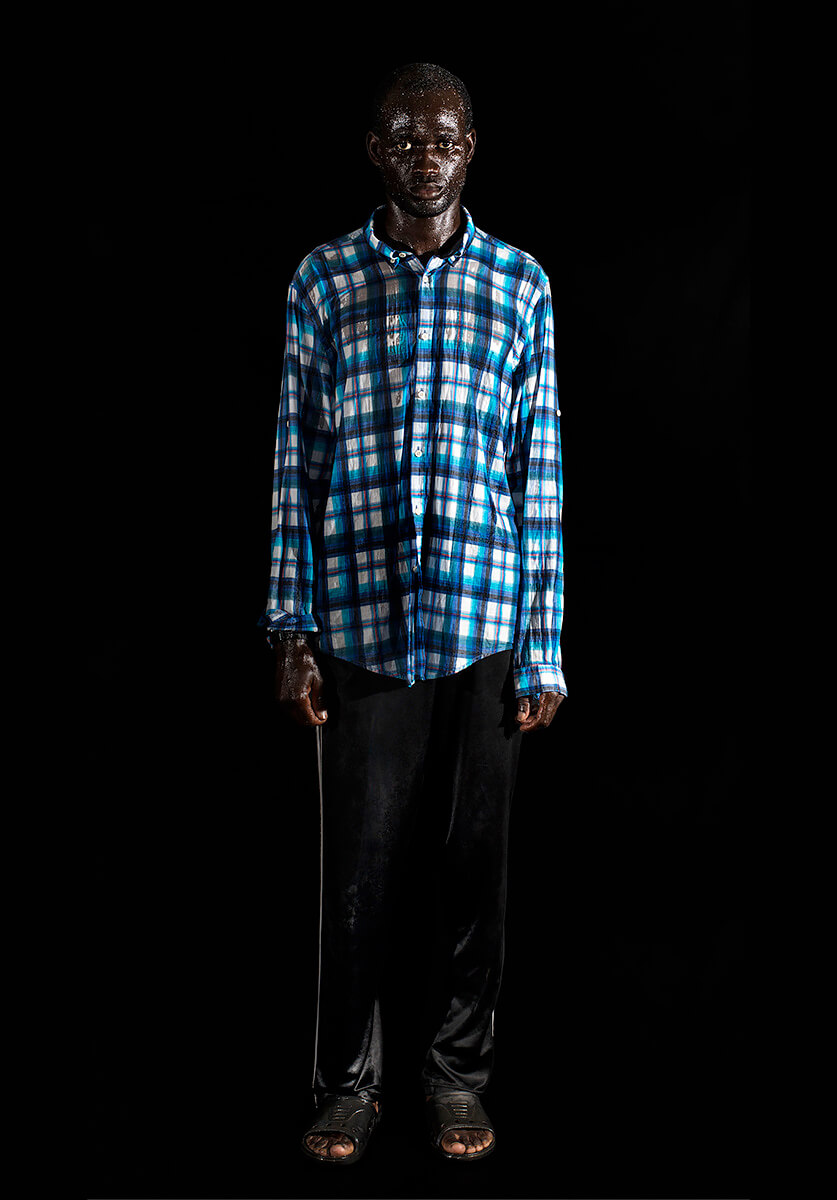Opening Reception: Saturday, January 18, 7-10pm at the Plaxall Gallery, 5-25 46th Ave, Long Island City Exhibition on view Thursday, January 16 - Sunday February 16, 2020
The Plaxall Gallery & Long Island City Artists (LIC-A) invite you to join us for the Opening Reception of Life Interrupted curated by
Orestes Gonzalez. Orestes Gonzalez writes It has been an ever existing condition of my photography work to listen to stories of people and their life journeys. These stories have always filled me with curiosity and have influenced my way of photographing the narratives that I find important. One constant that I've found is the ambiguity of fate in people's lives. No matter how well planned you try to live your life, life always has other plans for you. It is these disruptions that our artists so brilliantly interpret here. We invite you to witness how people, for the most part, maneuver these life interruptions with strength, humor, and dignity.
We are pleased with the distinguished work our collective of photo based artists have brought to this exhibition. Including works by F. Emmanuel Bastien, Jaime Bautista, Alberto Bursztyn, Verónica G. Cárdenas, Steven M. Contreras, Orestes González, Alaín Licari, Pierre-Yves Linot, Ann Romero de Córdoba, Susan Rosenberg Jones, Griselda San Martin and Susan Saunders.
Long Island City Artists, Inc. is a non-profit, 501(c)(3) arts advocacy organization with a mission to increase the development and visibility of professional and emerging artists in Long Island City, New York. We are based out of The Plaxall Gallery, a 12,000 square foot fine art community center in LIC. LiC-A, The Arts Happen Here!
F Emmanuel Bastien
Zozia, Melkia & Mirza
On August 2014 the Yazidi community in Northern Iraq was victim of a genocide in the hands of ISIS when they entered the town of Sinjar, killing between 2000 and 4000 Yazidis, mostly men and women over 40 and took captive an even larger number or survivors, primarily young women and their children who were then sold into slavery.
Zozia managed to keep her 3 small daughters alive during her captivity. Melkia was sold 22 times and also managed to keep her small boy alive. He was 4 days old when she was captured.
Mirza was able to convince her captors she was willing to be trained as a suicide bomber so she could be reunited with her 10 year old son and escape days before he was to be sent himself on a suicide mission. All 3 women managed to escape with their children and then fled to Canada.
During my visit Melkia received threatening phone calls from ISIS members on her new Canadian phone, letting her know she will be hunted down. Zozia, Melkia, and Mirza are now living permanently in Canada. They are learning English, learning to drive, raising their children and finding a way to get past the trauma.
All about F Emmanuel Bastien
Alberto Marcos Bursztyn
Images of Theresienstadt
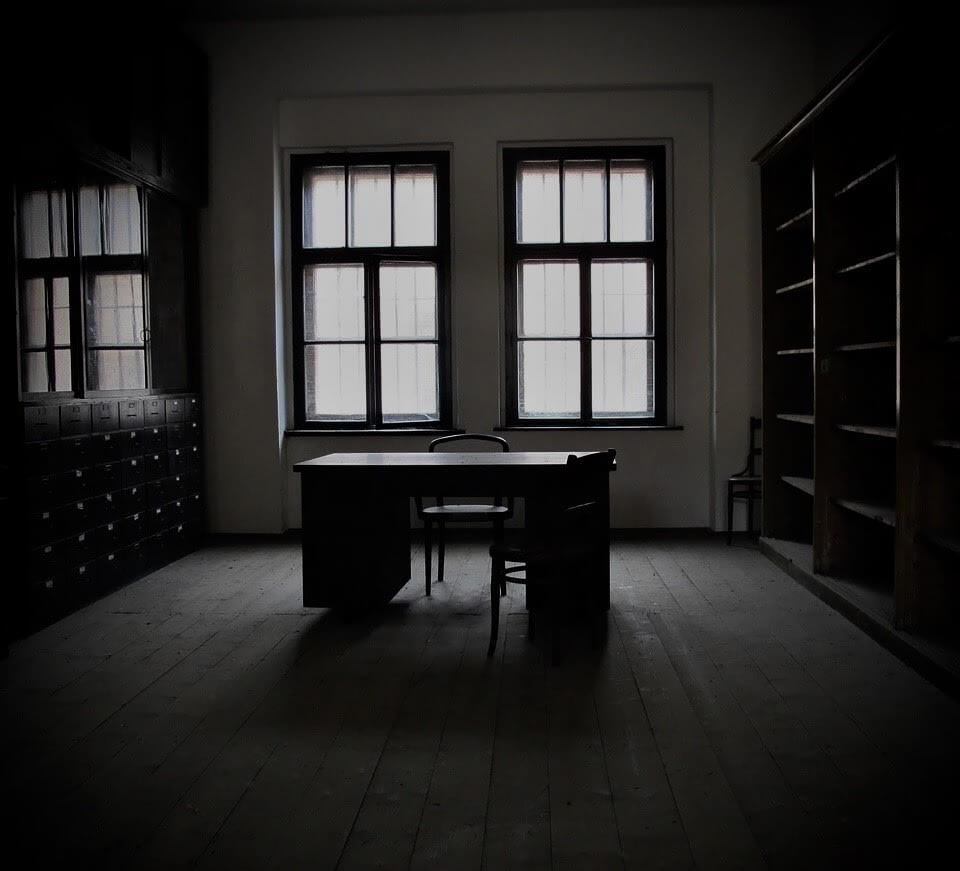
© Alberto Marcos Bursztyn
The Nazi concentration camp Terezin/Theresienstadt near Prague, a silent and oppressive cluster of squat buildings, only hint at the genocidal horror perpetrated here against Jewish families. The rail tracks that carried packed cattle cars to Auschwitz are hidden in grass, the electrified fence is a short walk from the perpetrators' swimming pool and movie theater; the infirmary barracks where my mother-in-law and her sister lay ill with typhus is down the road. The ubiquitous sign Arbeit Mach Frei is still prominent at the gate.
I photographed this concentration camp five years ago and have since hesitated to show the images. I now feel an obligation to share this series as a reminder of how those in power can interrupt, disrupt, and destroy the lives of others deemed different, inferior or outsiders.
The same dangerous forces unleashed in that era are with us still, finding expression in the public sphere.
All about Alberto Marcos Bursztyn
Verónica G Cárdenas
La Ultima
This project documents the last days of a group of trans women waiting in a makeshift shelter in Tijuana, seeking asylum at the San Ysidro Port of Entry in California.
The night before, someone had broken into the second story of the shelter where they were staying. It was not a safe place to be. The neighbors would harass and at times throw rocks at them. The following day, they started getting ready to seek asylum, trying to look their best. Upon arrival, the group was initially turned away by U.S. Customs and Border Protection.
Meanwhile, a neighbor, according to the person in charge of the shelter, tried burning down the place, yelling This is what happens to you for hosting faggots. They were eventually placed in front of the list of 800+ people waiting to seek asylum. They were hurriedly processed after proving their lives were in danger for being part of the LGBTQ+ community. They spent their last day together at the shelter, unaware that those last moments would be the last for Roxsana Hernández, a trans woman that later died accidentally while under ICE custody.
All about Verónica G Cárdenas
Steven Molina Contreras
Mi Familia Imigrante
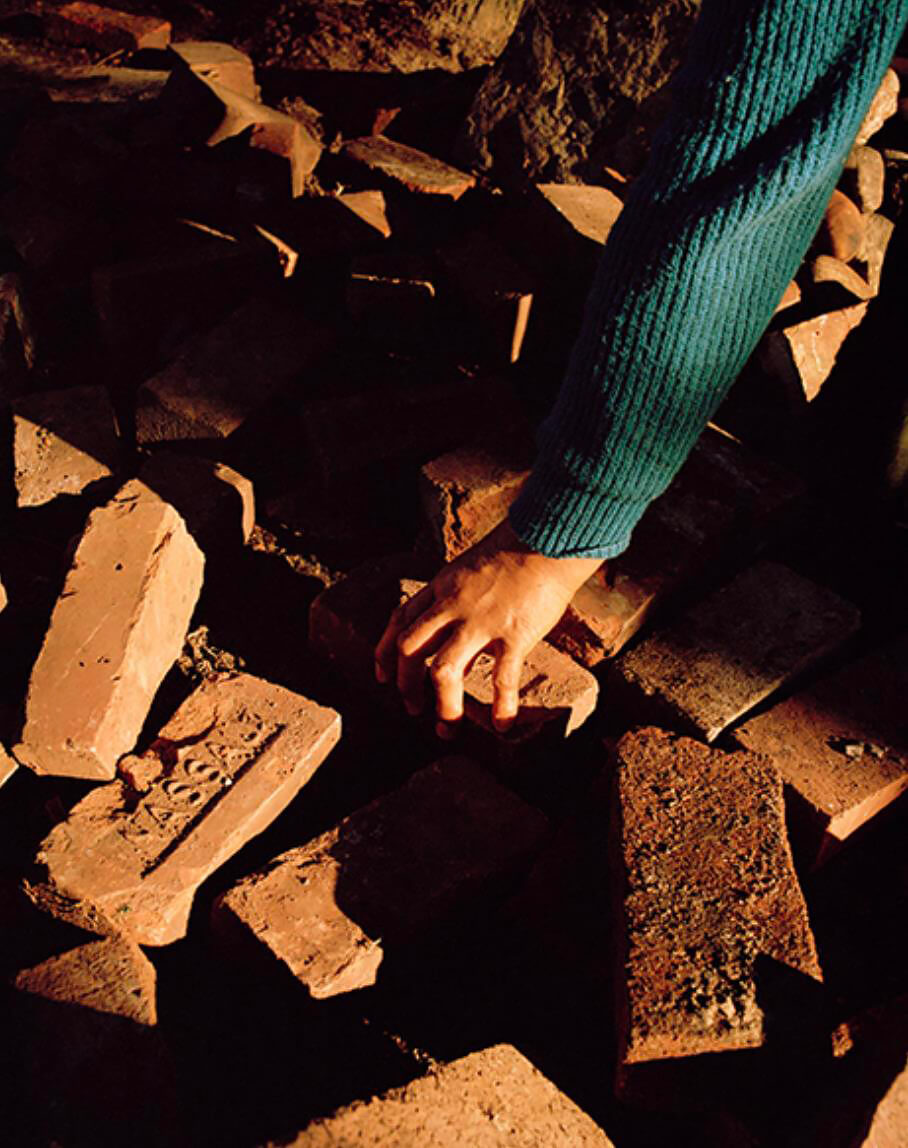
© Steven Molina Contreras
Immigrating to the United States has taken a large toll on the formation of my family. Since emigrating here from El Salvador/Peru in the 2000s, we've undergone the heavy process of legalization, shared in the consequences of assimilation, feared for the lives of our undocumented loved ones, and have constantly fought to make a land we were not born into, ours.
Each challenge felt cyclical-as if we were always destined to feel a burden for being immigrants in the United States, unable to heal from the pain and fear we suffered. Through the act of image taking, we've contemplated on these experiences as a family and have begun to reclaim the narratives and experiences we faced. This revealed the beauty in overcoming these obstacles and exposed the duality of building a home faced with uncertainty, yet we rebuild regardless. All the while guided by our Matriarch, Alma.
The interruptions we faced lost their control over us and allowed my family to reimagine the way we see each other.
All about Steven Molina Contreras
Orestes Gonzalez
Disruption
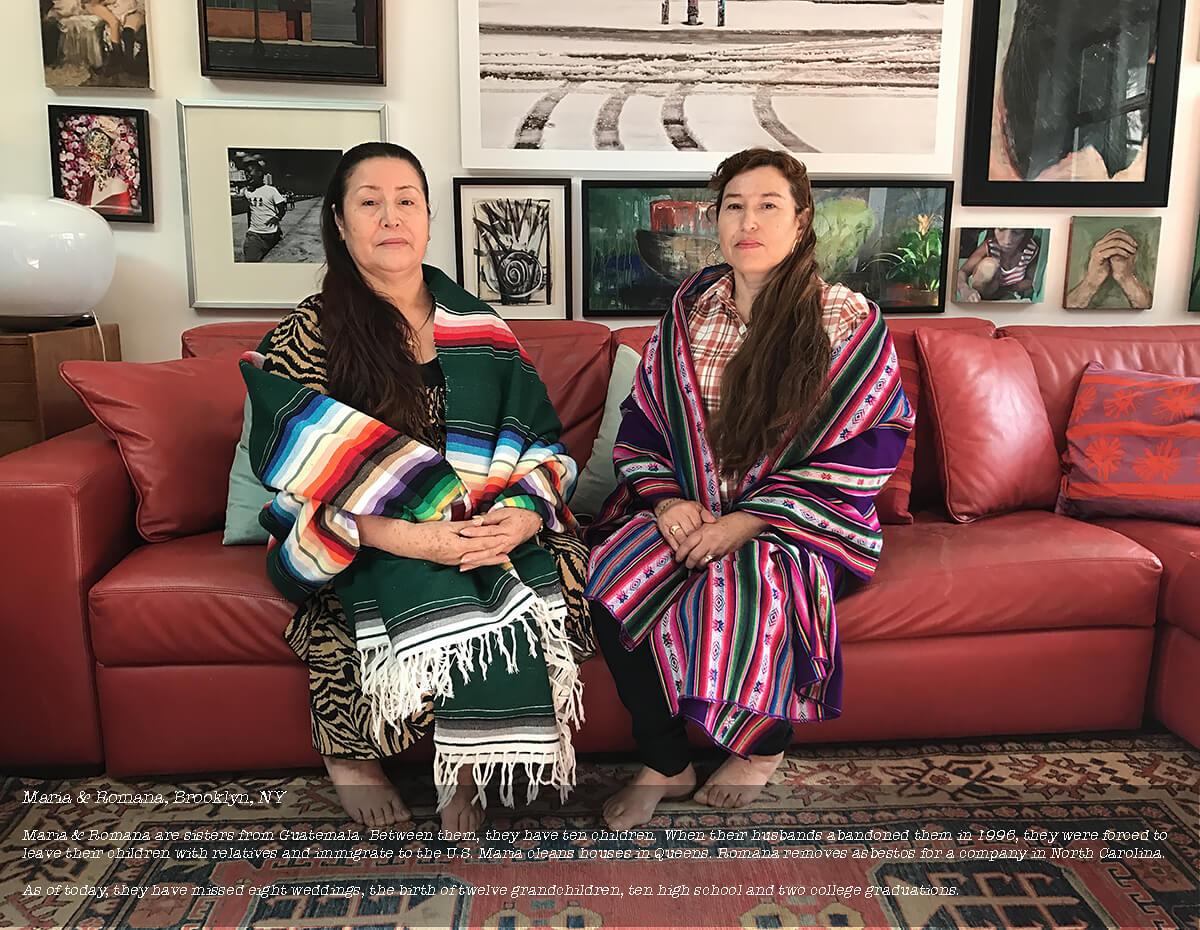
Maria & Romana © Orestes Gonzalez
This ongoing series, started in 2016, is the result of stories that have either been told to me during my annual travels or that I have experienced by personally knowing the subject. These stylized images all accompany true narratives of interrupted lives and their corresponding hardships, much in the same manner as the photo essays in Life Magazine, a source of inspiration growing up in the U.S. in the '70's.
Little did I know that those stories in Life would eventually hit so close to home.
All about Orestes Gonzalez
Alain Licari
We Could be Heroes - Slab City, California
In terms of Gross National Product (GNP), the U.S still leads the world. Many flock to this country, ready to chase the American Dream.
But for some born in this country, the reality is different. Statistics show an ever expanding wealth accumulation at the top 5% of the population, while a shrinking middle class and an ever growing sector of Americans continuing to fall under the poverty level.
To some, there is no alternative but to live off the grid.
In southern California, in the Sonoran Desert just north of the Mexican border, lies Slab City. A former military base, this city is home to thousands of people quietly living on the margins of society. Mostly populated by people that choose this lifestyle for many reasons, this fragile group is mostly self- governing and immune to the goings on of the outside world. It is composed mainly of hippies and idealists who settle there for philosophical/libertarian reasons. But also by US veterans, suffering from the traumas of war and a meager government pension, and by heads of families who re-build that sense of dignity that alluded them in the real world.
In April and October of 2018, I visited Slab City, and gathered the images and stories of people living another version of the American Dream. This series shows some moments of their lives.
All about Alain Licari
Pierre-Yves Linot
Immigrant Song
I started Immigrant Song with diptychs including the portrait of an immigrant and a still life of the arrangement they made with four stones. The underlying idea was to shoot a double portrait, figural and abstract: one showing the face, the other something that the individual created.
Afterwards, I added a photograph of an object that the immigrant brought from their country plus a photograph of a text they wrote exploring what it means to live a ‘life interrupted. I transfer my images to watercolor paper using an alternative process.
This technique symbolizes the transfer from one country to another and also from one life to another.
All about Pierre-Yves Linot
Ann Romero de Córdoba
Motherhood
On Christmas Eve and at the end of one of the most chaotic years in American history -2018- I gave birth to my first and only child.
I had spent most of that year walking around in shock that I had gotten pregnant at all, having been diagnosed with fertility problems many years before. After having my daughter, I also soon realized how difficult it was to leave my home to make artwork.
Most of my photographs previously had been about going outside myself to make work, yet here I was confined to a 900-square-foot apartment in Queens. Thus, I began to dramatize the mundane moments of my life with a baby inside my home. I also realized that it wasn't pregnancy that was hard, as everyone imagines, but the first twelve months afterward. This current work aims to construct a narrative about my inner life and my new relationship with my baby in those months. At times mundane, and in many moments magical, I found strength and solace in the new life that I watched grow before my eyes.
All about Ann Romero de Córdoba
Susan Rosenberg Jones
Second Time Around
After having been married for 32 years my husband passed away in 2008, after a long illness. Once widowed, I experienced the confusing and mixed feelings of grief: guilt, loneliness, regrets, indelible memories of loving glances, hugs, and laughs. My home and family life had been stable, comfortable and reliable in terms of feeling loved and appreciated. Now my life was interrupted. I decided that I would move forward in small steps, having friends over, rekindling interests and hobbies, and continuing to work. But I was lonely for companionship.
In 2009 I decided to try online dating because I wanted to meet a man for an occasional movie or dinner date. The second man I met online was Joel, and we felt a bond right away. Soon after, I closed my account on JDate. We married in January of 2012 in a lovely ceremony at home. I hadn't expected to fall in love, but I did. To my surprise and delight, I found that I could deeply love this wonderful man who entered my life, while holding dear the memories of my first husband.
Having been in a long-term marriage, I came to this new relationship with the tools in place to be a good wife. We quickly fell into the routine and ease of being a stable married couple, except that we were newlyweds in our 60's. There is humor in that. For one thing, our bodies are not supple and streamlined the way they were when we were young. We both come with a lot of baggage, and at our ages, it's no big deal, nothing to get excited about. We've both seen a lot, done a lot, and have higher thresholds for idiosyncratic behavior than in our 20's and 30's.
In this series, Second Time Around, I delight in observing my new husband as he goes about living day to day. We both know that life is short, and perhaps because of our new-found love and comfort, can journey through this life with a certain enthusiasm. We feel secure, yet we know we're lucky.
All about Susan Rosenberg Jones
Griselda San Martin
The Wall
Deported musician Jose Marquez visits his daughter Susanna and 14-year-old grandson Johnny who are both on the U.S. side of the fence. Jose and his daughter have been separated for almost 15 years since he was deported from the United States after living and working in San Diego for almost two decades. Once a month, they see each other through the metallic fence at Friendship Park in San Diego, California.
All about Griselda San Martin
Susan Saunders
True Story
Late one evening, two young men in Long Island slipped into a police impound lot and borrowed a confiscated Lamborghini. Slowly and quietly, they rolled out of town to a back road where they could really open it up. The road was deserted and straight and the speedometer moved easily from 70 to 90. As it reached 120, the driver suddenly remembered a curve up ahead. But it was too late. The car went airborne, and struck an old pine tree 15 feet off the ground. They were killed instantly.
This shrine was created on the tree where they died.
All about Susan Saunders
Francisco Uceda
Mojados: Portraits of Immigrants
Verbal abuse-wielded with such slurs as wetback, beaner, jagger, brazer-is part of a multifaceted experience of violence that includes raids, detention, forcible removal, familial separation, and physical assault. The criminalization of immigrants as threats to national security and scapegoating them for the country's socioeconomic ills have tragic ramifications for millions of immigrants who actively contribute to the US economy and the vibrancy and diversity of American society.
Photography is a powerful medium to raise consciousness and protest injustice. With Mojados, I try to just do that by vividly capturing the humanity of immigrants that racist and xenophobic assaults aim to deny them. In these portraits, we see subjects' faces, some hardened, some soft; their stances, some bold, some shy; their clothing, different colors and styles, more or less vivid against the black backdrop from which to varying degrees each seemingly has emerged from the darkness to claim a presence. I explore people who have largely remained in the shadows-those segregated and marginalized from mainstream society. Mojados takes from Frank's and Avedon's work on immigrants, but instead of trying to capture their souls, I try to capture their voices, to humanize them, to let the subjects speak up and be proud, to come out of the shadows and be whole.
All about Francisco Uceda
